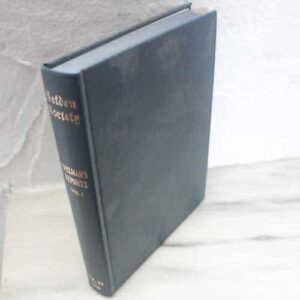 Today is the anniversary of the death in 1546 of Sir John Spelman, judge of assize and law reporter. He was buried at Narborough, Norfolk. Spelman is known for his reports of cases from 1502 to 1540, which included the proceedings against Cardinal Wolsey, Lord Dacre, the Carthusian monks, Bishop Fisher, Sir Thomas More and Anne Boleyn. His reports are a fascinating primary source – here is a photograph of my copy of Volume I.
Today is the anniversary of the death in 1546 of Sir John Spelman, judge of assize and law reporter. He was buried at Narborough, Norfolk. Spelman is known for his reports of cases from 1502 to 1540, which included the proceedings against Cardinal Wolsey, Lord Dacre, the Carthusian monks, Bishop Fisher, Sir Thomas More and Anne Boleyn. His reports are a fascinating primary source – here is a photograph of my copy of Volume I.
His report on the case against Anne Boleyn in 1536 included the interesting comment:
“And all the evidence was of bawdery and lechery, so that there was no such wh*re in the realm. Note that this matter was disclosed by a woman called Lady Wingfeilde, who had been a servant to the said queen and of the same qualities; and suddenly the said Wingfeilde became sick and a short time before her death showed this matter to one of her …. [the rest is missing].”1
It’s tempting to read his first sentence as sarcastic, isn’t it? The trial obviously made Anne out to be the worst adulteress there had ever been and the language used in the indictments was definitely intended to shock: Anne was “following daily her frail and carnal appetites” and “procured and incited her own natural brother, George Boleyn, knight, Lord Rochford, to violate her, alluring him with her tongue in the said George’s mouth, and the said George’s tongue in hers […]”.2
But who was the “Lady Wingfeilde” who disclosed Anne’s behaviour?
Lady Bridget Wingfield (née Wiltshire) was the daughter of Sir John Wiltshire of Stone Castle, Kent, who was a neighbour of the Boleyn family who lived at Hever Castle. It is thought that she served Catherine of Aragon as a lady-in-waiting and then served Anne as a lady of the bedchamber. She was close to Anne and in 1532 Anne and Henry VIII stopped at her home on their way to Dover to travel to Calais. Lady Wingfield is thought to have died in around 1533/4, but Spelman’s report shows that something she’d written or told someone about the queen was used at Anne’s trial on 15th May 1536. Anne was, of course, found guilty of treason and was executed on 19th May 1536. As Clare Cherry and I pointed out in our book George Boleyn: Tudor Poet, Courtier and Diplomat: “Whatever was or was not said, any revelation she may have made was not deemed necessary to bring to anyone’s attention until Cromwell started asking questions immediately prior to the Boleyns’ trial. Of course, at the time of the trial Lady Wingfield was conveniently dead; any evidence deriving from her could not be confirmed, and likewise could not be challenged by the defendants.”3
Was Lady Wingfield the “one woman” George Boleyn was speaking of when he was reported as saying “And on the advice of only one woman you want to believe of me such a great criticism. That, for the action of her presumption, you determine my condemnation […]” at his trial?4 Or it could have been Lady Worcester, who is implicated in the poem by Lancelot de Carles, secretary to the French ambassador. We just don’t know.
Notes and Sources
- ed. Baker, J.H. (1977) The Reports of Sir John Spelman, Selden Society, London, p. 70-71.
- Letters and Papers, Foreign and Domestic, Henry VIII, Volume X. 876.
- Cherry, Clare, and Ridgway, Claire (2014) George Boleyn: Tudor Poet, Courtier & Diplomat, p. 243.
- de Carles, Lancelot, “Poème sur la Mort d’Anne Boleyn”, lines 861-864, in La Grande Bretagne devant L’Opinion Française depuis la Guerre de Cent Ans jusqu’a la Fin du XVI Siècle, George Ascoli, translated by Susan Walters Schmid in “Anne Boleyn, Lancelot de Carle, and the Uses of Documentary evidence”, dissertation, Arizona State University, 2009.